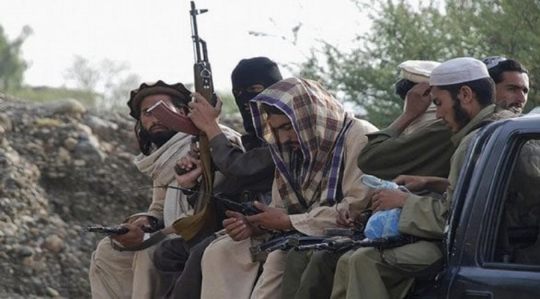Neo Taliban
Mohammad Ali Babakhel | 14 September 2021
THE fall of the government and the Taliban’s ascendency in Kabul has pushed Afghanistan towards another transition. Several questions arise. For one, are the new Taliban different from the old Taliban?
After the US-led invasion in 2001, the Taliban transformed themselves from a movement to an anti-imperialist force. Will they transition to a political party or continue as a movement? Circumstances suggest that continuity as a movement will pay more dividends and help them retain their monopoly on power.
Article 1 of the Afghan constitution says: “Afghanistan shall be an Islamic Republic, independent, unitary and indivisible state”. It is difficult at present to gauge whether it will be an operational unitary republic or remain administratively a fragmented state. If the Taliban reconsolidate their power, that will not only strengthen their position but also reinforce Afghanistan as a state.
Article 4 recognises the pluralistic character of the social fabric. Whether Taliban governance is reflective of that will be a test case.
The real test is to transition from fighting to governance mode.
Also, what is the status of the Afghan constitution? Without a constitution and documented legal procedure, how will the Taliban get international recognition and foreign funding? Non-recognition will push the country into isolation. Recognition will make them more responsive to their international obligations, open new avenues for regional cooperation and ensure peace.
What about the security apparatus and internal security challenges? According to Nato estimates, the Taliban’s present strength is 85,000 fighters. Would the defence apparatus be an amalgamation of the Taliban and for¬¬mer members of the Afghan National Army or will it be a purely Taliban force? If the latter, what will be the fate of former mem¬bers of the ANA and the Afghan National Police?
Article 22 of the Afghan constitution guarantees equal rights for men and women. Fears in the media about women’s rights may negatively impact the Taliban’s image.
Freedom of the press and journalists’ security will also have a profound impact on their credibility. In Reporters Without Borders’ World Press Freedom Index, Afghanistan is ranked 122 out of 180 countries. And this time the Taliban have to deal with a far more literate and aware society.
Though they have expressed the resolve that Afghan soil will not be allowed to be used against any country, only its practical manifestation will prove this. Severing ties with and denying space to terrorist groups will be a gigantic task.
Also, while operational disengagement may take place owing to global compulsions, ideological linkages may remain intact. In case both linkages are severed, it may result in militant groups repositioning themselves which will impact the militancy landscape in terms of targets and strategy. Though the Taliban formally deny the presence of foreign terrorist fighters, a recent UN report estimated there are between 8,000 to 10,000 of them in the country. Denying space to them and countering terrorism requires intelligence-sharing, improved border security, and cordial ties with neighbours.
During their two-decade war against the Afghan government and US military, the Taliban learned about diplomacy and tackled intra-organisational crises. The situation may be fluid at present but the new Taliban appear experienced and familiar with international politics, diplomacy and media management.
To avoid isolation, they visited Russia and China prior to their rapid military advance across Afghanistan. They reportedly offered assurances that they wouldn’t violate the borders of Central Asian countries and guaranteed security for foreign diplomatic missions in Afghanistan.
They have also learned the importance of effective communication. In the run-up to the takeover of Kabul, they effectively utilised ‘night letters’ (shabnamah) to communicate with the rural tribal population. However, their increasing presence on social media signifies their adaptability, given their now vastly expanded target audience.
The Taliban’s real test will be transitioning from fighting to governance mode. Multiple issues confront them, including governance, internal security, international isolation and pressure from neighbours to deny space to militants and prevent a refugee influx. The withholding of $450 million allocated for Afghanistan by the IMF indicates the financial crisis that may lie ahead. Administrative reconsolidation, reconciliation, reconstruction; inclusiveness, and respect for international obligations may bring some relief. Synchronisation between political and military sections of the Taliban will lead to more administrative ease.
The struggle against foreign military might involved different dynamics. The transformation from an insurgent group to a political actor requires concerted efforts. The Taliban have another opportunity; they must prove their worth. It is now or never.
The writer is author of Pakistan: In Between Extremism and Peace.
This article was originally published on Dawn.
Views in this article are author’s own and do not necessarily reflect CGS policy.
